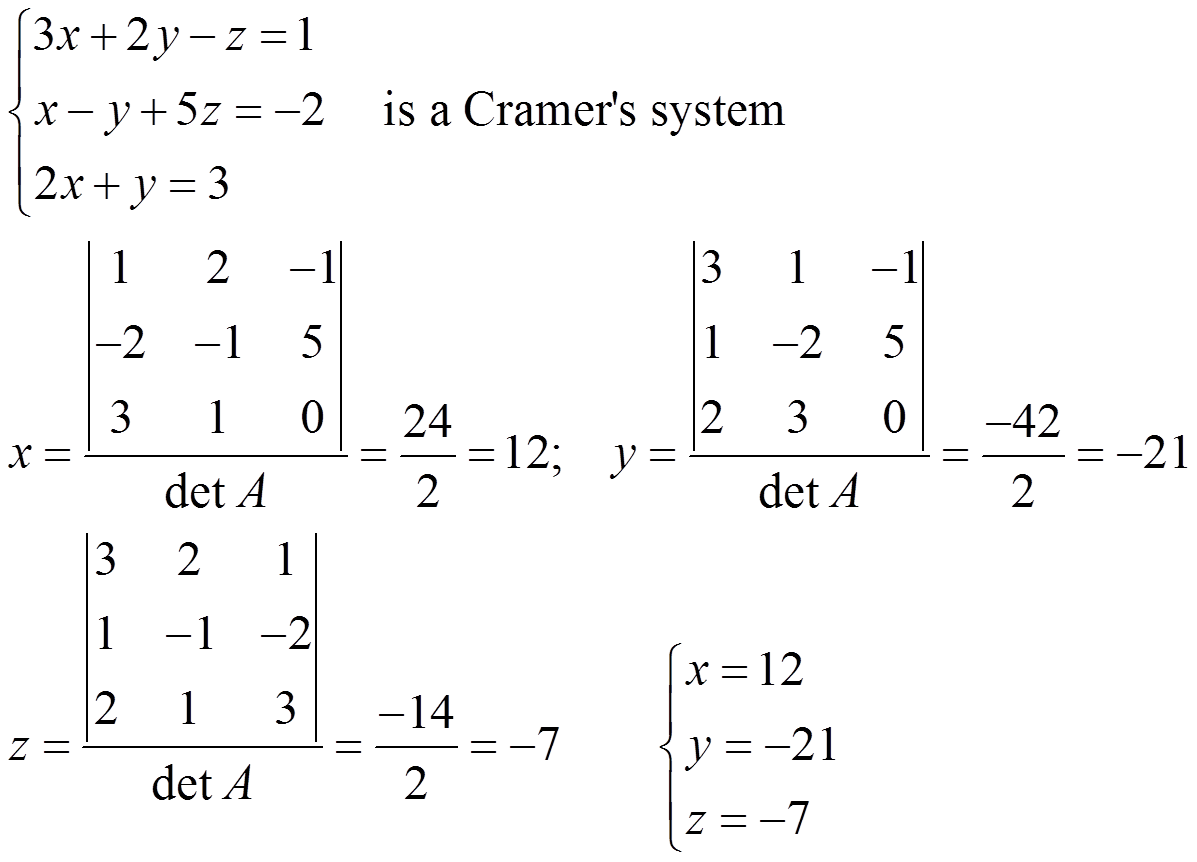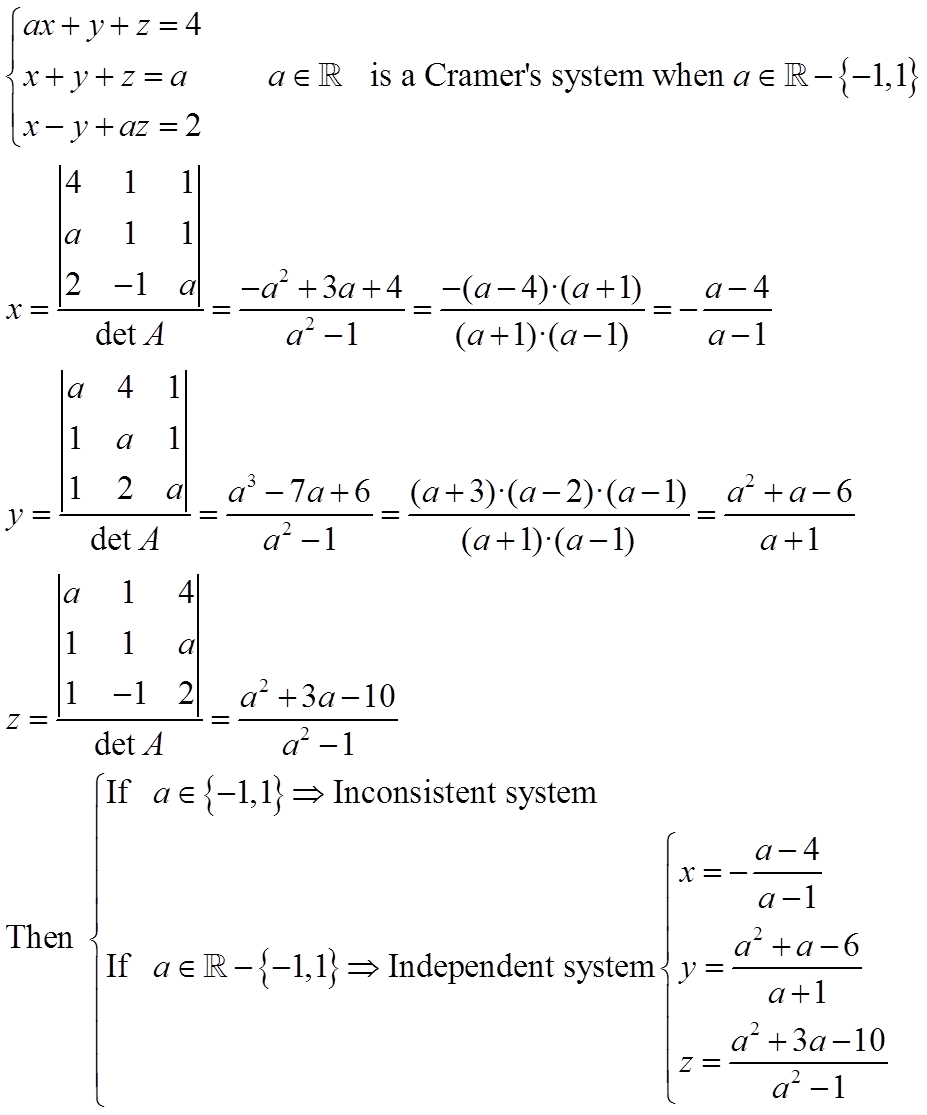RankRoucheFrobeniusTheoremCramersRule
Cramer's rule
We say a system is a Cramer’s system if:
(1) # equations = # unknowns
(2) det A ≠ 0
Then
(i) It is an independent system
(ii) ![]() where Ai is the resultant matrix when we change the ith column for B
where Ai is the resultant matrix when we change the ith column for B
Example 1:

Example 2:

Exercise: solve the following systems by using Cramer's rule, when they are consistent:

Solutions:
a) x = 1; y = 3; z = 5
b) If a = 2; x = -1 + λ; y = 2 + λ; z = λ; λ € R
If a € R-{-1,2}; x = 1/(a+1); y = 2/(a+1); z = (a+2)/(a+1)
c) If m ≠ -1; x = y = z = 0
If m = -1; x = y = z = λ € R
Licensed under the Creative Commons Attribution Non-commercial Share Alike 3.0 License